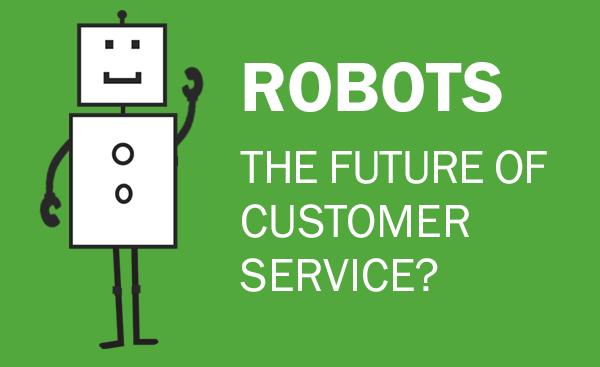Robots – the future of customer service?

Recent Forrester research pointed out the importance of understanding customer emotion and creating empathy with consumers if brands are going to deliver a successful customer experience. This was backed up by Eptica’s study ‘The Power of Linguistics: Consumers vs. Agents: Can the Gap be closed?’, which found that nearly a third (31%) of consumers ranked companies failing to acknowledge upset or anger as a major issue that caused them to switch to rivals. This would seem to put the need for the human touch at the heart of customer service.
At the same time companies face a major challenge in scaling to successfully respond to the growing number of customer interactions, across a widening range of channels. Customers want fast replies that fully answer their question, on their channel of choice. Providing this is not always straightforward for agents.& 61% of agents within the Eptica studysaid they found it hard to understand the vocabulary and language that consumers used on digital channels such as email and social media.
While it may seem counter-intuitive, deploying technology can actually help with building empathy and delivering efficient service at the same time. The reason is that a large percentage of the questions customer service organizations receive are sent by consumers who cannot find the answer to their question online. They don’t want to email, tweet or phone, but are forced down these channels, adding to frustration and damaging the customer relationship. For this type of query, consumers are overwhelmingly in favor of using self-service systems – for exampleGartner predicted that by 2020 85% of customer relationships would be run without human intervention, while Forrester research found that in 2014 76% of respondents used online self-service systems – higher than the telephone channel.
Clearly, technology can be used to help consumers better serve themselves, freeing up human agents to deal with more complex queries where they can use their emotional understanding to improve the customer experience. Additionally, technology such as linguistics can also assist agents and consumers alike by better understanding the tone and language of their question, and automatically providing relevant, fast answers.
The rise of the robots
Of course, there’s a wide range of technology available to assist the customer experience – from the mundane to the extremely innovative. We’ve had Virgin Atlantic using Google Glass to assist with passenger check-in, and Darty in France using wireless help buttons to connect consumers to customer service agents automatically. Given this narrowing gap between science fiction and everyday life, it was perhaps inevitable that robots would soon be enlisted to improve the customer experience.
So the news that SoftBank in Japan has just launched Pepper for Biz, the world’s first customer service robot isn’t a major surprise. A 4 foot high humanoid robot, it comes loaded with applications that enable it to greet visitors, guide them to the right place and answer their questions. As companies can customize the applications it will be possible to extend the range of customer service functions it can carry out in the future – and its software enables it to understand human emotions by reading facial cues, learn about its environment, and then respond accordingly. And, as it costs around $440 per month to rent, it provides a cost-efficient way of adding to human staff, for example in a store, hotel or business reception. Pepper could provide a first line of contact, and escalate any queries that require more complex answers to a human co-worker.
Will robots play a bigger part in future customer service? Probably. The majority of consumers are now increasingly at ease with technology, meaning that the latest generation of non-threatening, helpful robots would probably be extremely well received in face to face customer service environments. However, if they are to succeed what is needed is to balance technology with traditional human skills in order to deliver a seamless customer journey that balances self-service with empathy to provide a tailored experience for every consumer’s individual needs.







Comments